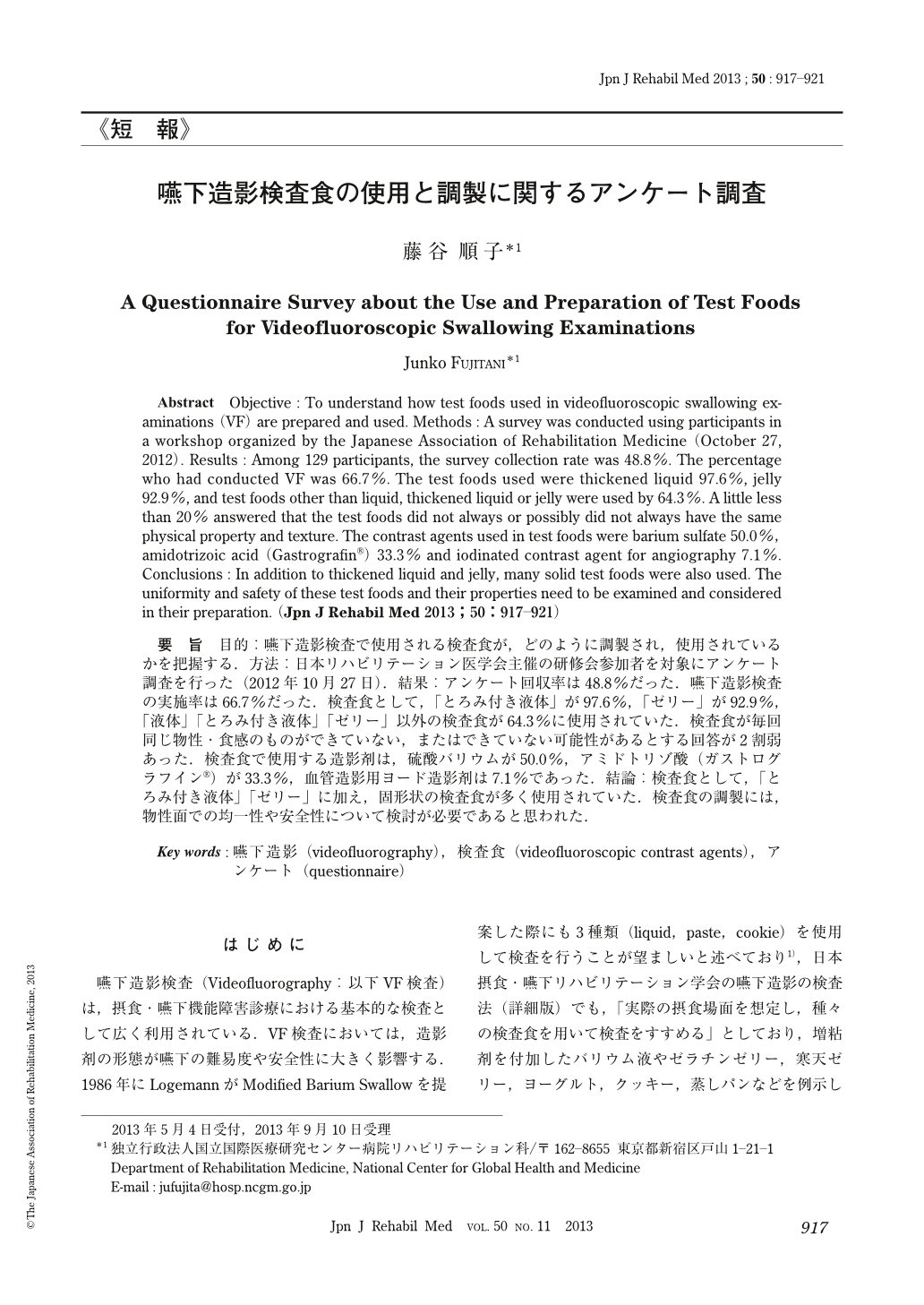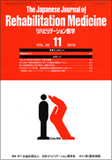Japanese
English
- 販売していません
- Abstract 文献概要
- 1ページ目 Look Inside
- 参考文献 Reference
要旨 目的:嚥下造影検査で使用される検査食が,どのように調製され,使用されているかを把握する.方法:日本リハビリテーション医学会主催の研修会参加者を対象にアンケート調査を行った(2012年10月27日).結果:アンケート回収率は48.8%だった.嚥下造影検査の実施率は66.7%だった.検査食として,「とろみ付き液体」が97.6%,「ゼリー」が92.9%,「液体」「とろみ付き液体」「ゼリー」以外の検査食が64.3%に使用されていた.検査食が毎回同じ物性・食感のものができていない,またはできていない可能性があるとする回答が2割弱あった.検査食で使用する造影剤は,硫酸バリウムが50.0%,アミドトリゾ酸(ガストログラフイン®)が33.3%,血管造影用ヨード造影剤は7.1%であった.結論:検査食として,「とろみ付き液体」「ゼリー」に加え,固形状の検査食が多く使用されていた.検査食の調製には,物性面での均一性や安全性について検討が必要であると思われた.
Abstract Objective : To understand how test foods used in videofluoroscopic swallowing examinations (VF) are prepared and used. Methods : A survey was conducted using participants in a workshop organized by the Japanese Association of Rehabilitation Medicine (October 27, 2012). Results : Among 129 participants, the survey collection rate was 48.8%. The percentage who had conducted VF was 66.7%. The test foods used were thickened liquid 97.6%, jelly 92.9%, and test foods other than liquid, thickened liquid or jelly were used by 64.3%. A little less than 20% answered that the test foods did not always or possibly did not always have the same physical property and texture. The contrast agents used in test foods were barium sulfate 50.0%, amidotrizoic acid (Gastrografin®) 33.3% and iodinated contrast agent for angiography 7.1%. Conclusions : In addition to thickened liquid and jelly, many solid test foods were also used. The uniformity and safety of these test foods and their properties need to be examined and considered in their preparation.

Copyright © 2013, The Japanese Association of Rehabilitation Medicine. All rights reserved.


